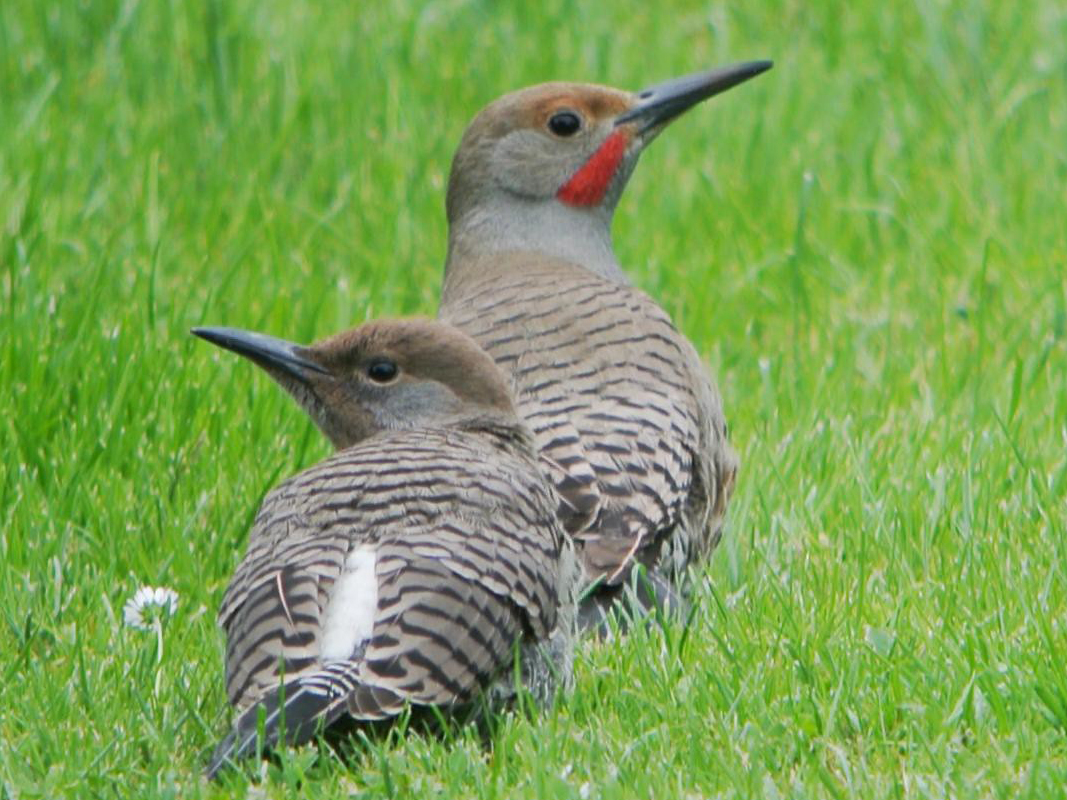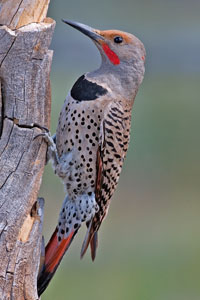
Those that breed up north also pass through the area twice a year-in late April through early May and again in September-in good numbers. In the New York City area, the flicker population is made up of both year-round residents and migrants, and there are significant numbers here throughout winter. Western flickers-found in California, Arizona, and other western states-flash red.

You can see the flicker’s white rump when it flies up, and eastern populations flash yellow under the wings.

It’s also the only woodpecker that’s mostly brown-all the others are mostly black and white with some red. Not only is it often seen on the ground, it’s also pretty big-about 11 or 12 inches long. He also writes about nature at northern flicker is easy to spot and identify. Naturalist Jim McCormac writes a column for The Dispatch on the first, third and fifth Sundays of the month. Whatever you call it, flickers rank high among our most interesting, showy and ecologically valuable birds. Gary Meiter in his book "Bird is the Word" notes that flickers have at least 160 nicknames, including cotton-rump, high-hole and yellow-hammer. Frontier ornithologist John James Audubon dubbed it the golden-winged woodpecker. Although nearby humans will be peeved, the female flicker is presumably enamored of her clangorous courter.Ī beautiful, conspicuous and charismatic bird, the northern flicker has been branded with scores of colloquial names. Creative birds might use metal downspouts and the ensuing racket rivals a pneumatic jackhammer. The amorous percussionist will find the loudest possible substrate and deliver short bursts of 25 beats a second. This is the likely source of their name: flicker is an onomatopoeia of the wicka call.Ĭourting males, especially, love to drum and the louder the better.

#Flicker bird series
Birds will deliver long series of wicka-wicka calls from prominent perches. Ants form the bulk of their diet, and ground-bound birds are usually plundering ant colonies.Ĭome spring, flickers commence courtship rituals and this can be a raucous affair. Flickers are no exception, but they also habitually forage on the ground. Most woodpeckers forage on tree trunks and limbs, excavating for tasty beetle grubs and other arboreal fare. Even flying squirrels make use of the handiwork of these master carpenters. Old nest holes are used by other species: chickadees, titmice, tree swallows and other cavity-nesting birds. Many flickers do stay to breed, and overwinter.įlickers excavate cavities in trees - typically in dead timber - for nest sites. Their spring migration peaks in mid-April and the birds are even more conspicuous then. We are in the peak window of fall migration, and my feeder bird was likely passing through. Of Ohio’s six commonly occurring nesting woodpecker species, the flicker is the most migratory. Flickers aren't a frequent visitor, unlike several other woodpecker species. I returned home the other day to find a male flicker occupying my backyard feeder, and I quickly set about making some photos. The flicker looks as if it was designed by a committee of artists, but the members never communicated with one another. In males, bold ebony mustaches mark the face. It displays a potpourri of field marks: crimson crown patch, fawn-speckled underparts, golden lower wings and tail shafts, and snowy rump. The robin-sized woodpecker is art on wings. Small wonder that a flicker would inspire Peterson, or anyone else. Perhaps no one has done more to promote birds and natural history than Peterson. The Peterson bird guides became a series of books covering numerous branches of natural history and influenced the careers of scores of naturalists and scientists.

His "A Field Guide to the Birds" appeared in 1934 with numerous subsequent editions. He was instantly smitten with birds and would become a renowned artist, writer and conservation tour de force. Peterson’s inaugural experience with a woodpecker called the northern flicker would shape his life. Poking the inert tuft with a finger, the object sprang to life and burst into flight, revealing underwings the color of molten gold. He happened along what appeared to be a clump of dead feathers stuck to the side of a tree, and investigated. One fine April morning in 1919, an 11-year-old boy named Roger Tory Peterson was exploring a natural area in Jamestown, New York.


 0 kommentar(er)
0 kommentar(er)
